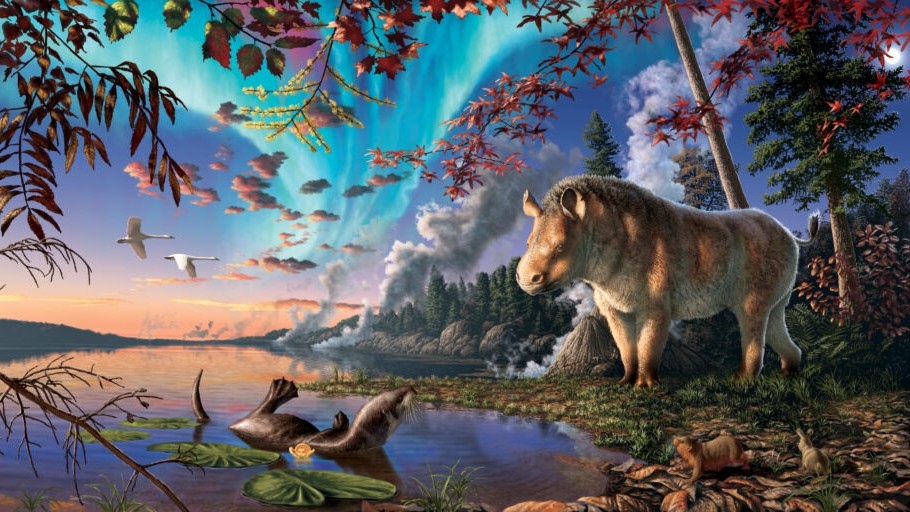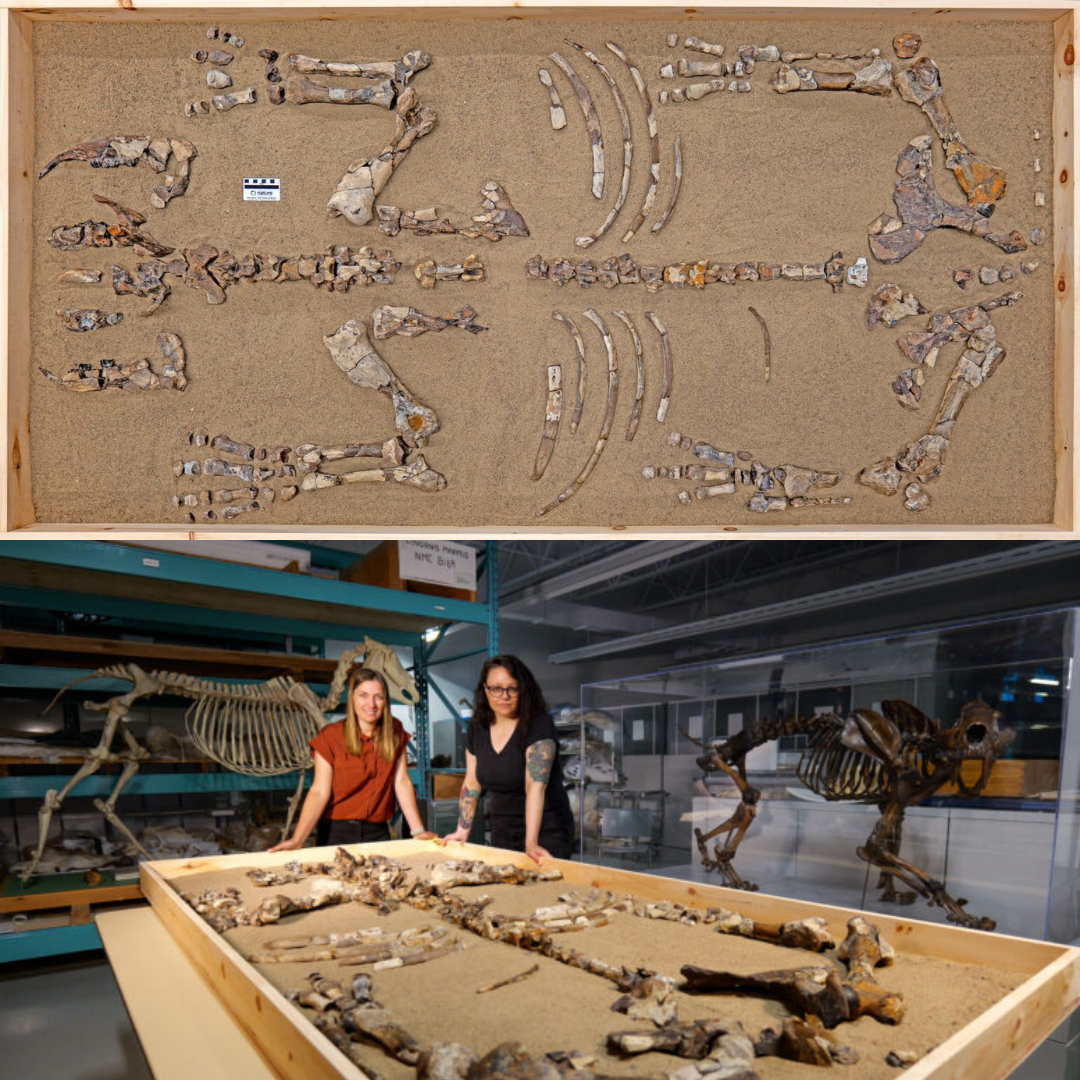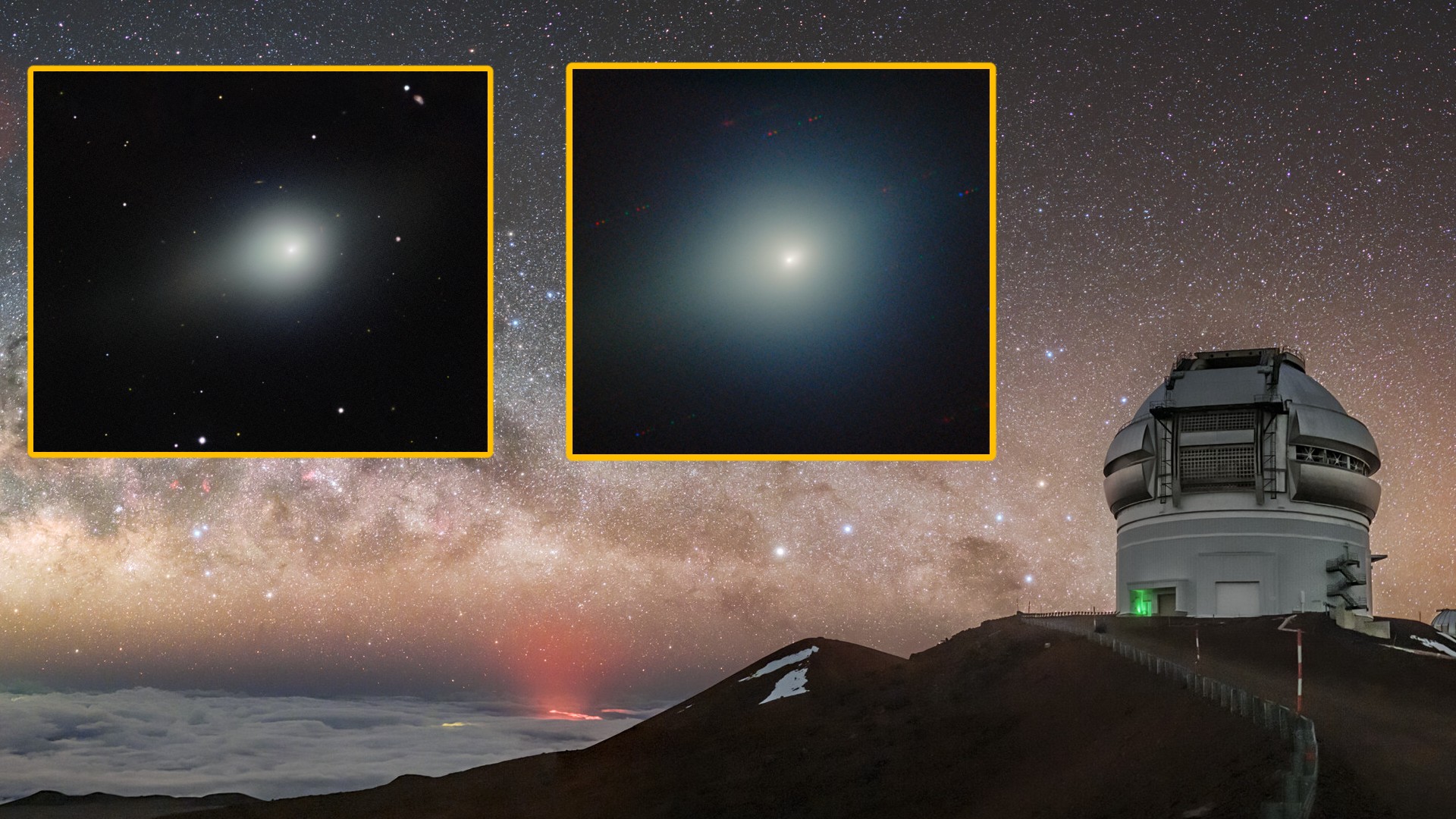Ancient 'frosty' rhino from Canada's High Arctic rewrites what scientists thought they knew about the North Atlantic Land Bridge
Researchers have gained new insights into rhinoceros evolution and the longevity of the North Atlantic Land Bridge from analyzing the perfectly preserved fossils of a "frosty" Arctic rhino.

Almost four decades ago, researchers discovered a collection of perfectly preserved fossils inside an impact crater in the Canadian High Arctic. Now, those remains have finally yielded their secrets, revealing they belong to an extinct species of hornless rhinoceros that lived 23 million years ago.
Scientists have called the animal Epiatheracerium itjilik, with the species name meaning "frost" or "frosty" in Inuktitut. These creatures were similar in size to modern Indian rhinos (Rhinoceros unicornis), according to a statement from the Canadian Museum of Nature (CMN). The newly identified fossils are the only specimen found to date and show that the animal died of unknown causes as a young adult.
"What's remarkable about the Arctic rhino is that the fossil bones are in excellent condition," Marisa Gilbert, a CMN paleobiologist and co-author of a new analysis of the remains, said in the statement. "They are three-dimensionally preserved and have only been partially replaced by minerals. About 75% of the skeleton was discovered, which is incredibly complete for a fossil."
The bones were preserved inside the 14-mile-wide (23 kilometers) impact crater thanks to it rapidly filling with water. The crater formed from an asteroid or comet around the same time that the Arctic rhino lived, which suggests the rhino died inside the crater before it became a lake.
The climate in this region was far warmer then than it is today, and plant remains show that the Canadian High Arctic — specifically, Devon Island in Nunavut, where the crater is located — hosted a temperate forest, according to the statement.
As the Miocene epoch (23 million to 5.3 million years ago) transitioned into the Pliocene epoch (5.3 million to 2.6 million years ago) and finally gave way to the last ice age, the fossils were broken up by freeze and thaw cycles and gradually pushed to the surface of the crater. Researchers then found the fossils in 1986.
Subsequent field trips to the crater uncovered more bones belonging to the Arctic rhino specimen. These expeditions also unearthed another species that lived 23 million years ago, the walking seal (Puijila darwini), which likely lived alongside Arctic rhinos.
Get the world’s most fascinating discoveries delivered straight to your inbox.
Gilbert and her colleagues described E. itjilik based on the characteristics of its teeth, lower jawbone and cranium compared with other rhino species. The researchers then determined the Arctic rhino's place in the rhinoceros evolutionary tree by analyzing the newfound species' ties to 57 extinct and living rhino groups. They published their results Tuesday (Oct. 28) in the journal Nature Ecology and Evolution.

The findings suggest E. itjilik was most closely related to rhinos that lived in what is now Europe earlier than 23 million years ago. True modern rhinos (Rhinocerotidae) evolved about 40 million years ago in North America and Southeast Asia, and their descendants subsequently spread to every continent except South America and Antarctica.
"Today there are only five species of rhinos in Africa and Asia, but in the past they were found in Europe and North America, with more than 50 species known from the fossil record," study lead author Danielle Fraser, a research scientist and head of paleobiology at CMN, said in the statement.
The newfound Arctic rhino is the most northerly rhinoceros ever discovered. The researchers think the species migrated from Europe via the North Atlantic Land Bridge, an ancient passage over Greenland consisting of exposed continental crust.
The North Atlantic Land Bridge emerged in the latter stages of the Cretaceous period (145 million to 66 million years ago), but when it disappeared is debated. Some studies indicate that the land bridge collapsed 56 million years ago; others suggest the bridge was more or less continuous until about 2.7 million years ago.
The new findings lend support to the latter hypothesis, because Rhinocerotidae arrived in Europe 33.9 million years ago, during an extinction and dispersal event known as the Grande Coupure, or "great cut." The new study suggests that by 23 million years ago, these rhinos had arrived in North America, so the land bridge likely persisted at least until the beginning of the Miocene epoch.
"It's always exciting and informative to describe a new species," Fraser said. "Our reconstructions of rhino evolution show that the North Atlantic played a much more important role in their evolution than previously thought."

Sascha is a U.K.-based staff writer at Live Science. She holds a bachelor’s degree in biology from the University of Southampton in England and a master’s degree in science communication from Imperial College London. Her work has appeared in The Guardian and the health website Zoe. Besides writing, she enjoys playing tennis, bread-making and browsing second-hand shops for hidden gems.
You must confirm your public display name before commenting
Please logout and then login again, you will then be prompted to enter your display name.


